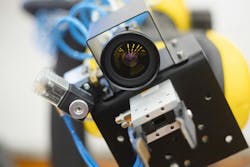How vision systems impact industrial productivity
Key Highlights
- Machine vision provides consistent, high-precision quality inspection at speeds unattainable by humans, directly minimizing defect rates and reducing costly recall risks.
- By allowing vision-guided robots to locate and manipulate parts in any orientation, machine vision eliminates the need for complex precision feeding, significantly boosting assembly line flexibility and throughput.
- Industrial vision systems are essential for predictive maintenance, utilizing real-time visual analysis of equipment wear and tear to proactively prevent unplanned breakdowns and maximize operational uptime.
Machine vision is transforming industrial operations by empowering automation with the ability to "see"—capturing, analyzing and interpreting visual information to make intelligent decisions. With its adoption, industries are witnessing significant gains in productivity, quality and efficiency.
How machine vision works
At its core, an industrial machine vision system comprises high-resolution cameras, specialized illumination, image processors and software algorithms. The system captures images or video of products and processes and then analyzes this visual data to detect defects or anomalies, measure dimensions with high precision, verify the presence or position of parts and guide automated equipment or robots.
Integration with artificial intelligence and machine learning further enhances the system’s ability to recognize complex patterns, enabling continuous self-improvement.
Industrial applications
Quality control and inspection: In the realm of quality control and inspection, one of the top applications is the detection of defects. Machine vision systems rapidly identify surface flaws, dimensional inaccuracies or assembly errors invisible to the human eye. For consistency, automated inspection ensures that every product is evaluated to strict standards, minimizing recall risks and improving customer satisfaction. This is further utilized in packaging inspection where it ensures correct labelling, sealing and barcode presence, preventing logistical or compliance issues.
Robotic guidance and automation is where assembly-line robots rely on machine vision to locate and manipulate parts, even in varying orientations or positions—a task previously reliant on precise feeding or human intervention. This is further enhanced via pick-and-place tasks where vision-guided robots enhance speed and flexibility, especially in automotive, electronics and logistics sectors.
The application of vision systems also provides for predictive maintenance, which enables real-time monitoring of equipment wear and tear. By analyzing visual cues such as surface degradation or misalignment, systems can predict failures and trigger maintenance before breakdowns occur.
Traceability and identification: Industrial vision systems read barcodes, QR codes and DataMatrix codes on products for end-to-end traceability, aiding compliance with safety, warranty and recall processes. Tracking movement through supply chains boosts transparency and operational efficiency.
Production line optimization: For process monitoring, machine vision gives instant feedback on production quality and process deviations, allowing for immediate corrective action. It also improves yield through fast, consistent inspections to reduce waste by quickly identifying faulty products for removal or rework.
Specialized applications include measuring and sorting, where vision systems precisely measure, sort and classify products by size, color or packaging, as well as inventory management where automated systems count and monitor stock in real time, facilitating lean manufacturing and logistics. Lastly, the application of 3D vision is used for applications like bin-picking or robotic navigation in complex spatial environments.
Get your subscription to Control Design’s daily newsletter.
Industrial benefits
Enhanced quality, through consistent, precise inspection yields higher-quality products and fewer defects, also providing increased throughput where automated vision works at speeds unattainable and unsustainable for humans.
Machine vision also results in reduced labor costs, as it minimizes the need for manual inspection, so human resources can focus on upskilled tasks. It also provides real-time data and instant feedback, which accelerates process improvement and troubleshooting. Other benefits include improved traceability through reliable tracking and documentation support, as well as safety and regulatory compliance. Overall it provides a greater flexibility via rapid reprogramming and enabling adaptation to new products or process changes.
Industry examples
Here are some of the many examples of applied machine vision:
- automotive — inspection of welds, paint and final assembly, robotic part placement on assembly lines
- electronics — solder joint analysis, PCB inspection and micro-component placement
- pharmaceuticals — verification of capsule integrity, fill levels and correct labelling for strict regulatory compliance
- food and beverage — contaminant detection, package inspection and expiration code verification
- logistics — automated package sorting, tracking and warehouse inventory management.
Challenges and future trends
While adoption continues to accelerate, machine vision does present challenges. These comprise complexity of integration where aligning vision systems with existing equipment requires planning and specialized expertise. This is further compounded by evolving AI models where ongoing advancement in AI and deep learning algorithms demands adaptability in both hardware and software.
Looking ahead, expect broader use of 3D vision, machine learning and cloud-based analysis, making visual inspection smarter, faster and more accessible to industries of all sizes.
About the Author

Charles Palmer
Charles Palmer is a process control specialist and lecturer at Charles Palmer Consulting (CPC). Contact him at [email protected].

Leaders relevant to this article:
